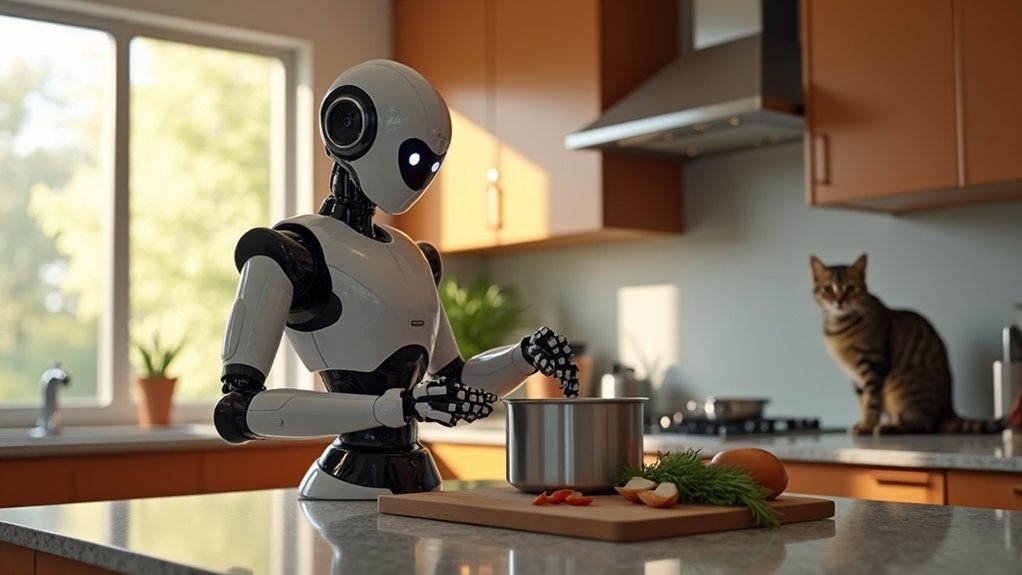The world’s readiness for humanoid robots appears mixed, despite Sam Altman’s optimistic 2025 timeline. Financial investments are soaring, with China alone pumping $614 million into robotics. Public acceptance is growing, especially in Asia-Pacific regions where robots assist in elder care and customer service. Yet concerns about job displacement and privacy linger. The technology shows promise, but society’s comfort level remains uncertain. The road ahead promises both innovation and inevitable awkward robot encounters.

While science fiction has long imagined robots walking among us, 2025 is shaping up to be the year humanoid machines finally step into our daily lives. The numbers don’t lie – over half of humanoid robots sold in the U.S. by year’s end will go straight to consumers. Not factories. Not labs. People’s homes.
Think iPhone launch meets ChatGPT fever, but with legs. Humanoid robots are having their moment, powered by breakthroughs in both hardware and AI that make them actually useful beyond just looking cool. They’re getting better at walking, talking, and not falling over – which, let’s face it, is pretty important for a robot. The Asia-Pacific region leads adoption rates, particularly in elder care and customer service roles.
The money’s pouring in too. China alone saw 27 financing deals worth $614 million in just two months of 2025. That’s a lot of faith in walking tin cans. But here’s the thing – they’re not just walking tin cans anymore. These robots are showing up in hospitals, hotels, and warehouses, doing jobs that humans either can’t or won’t do. Experts predict they could deliver a 20-30% productivity boost in key industries by 2030.
From walking tin cans to essential workers, robots are stepping into real jobs thanks to massive investments and advancing technology.
The public’s eating it up. Billion-plus viewership for robot performances? Check. Growing comfort with metal companions in everyday spaces? Double check. It’s like we collectively decided that having robots around is totally normal. Maybe those sci-fi movies weren’t so far-fetched after all.
But it’s not all robot rainbows and mechanical unicorns. People are worried about jobs disappearing, privacy concerns, and the weird ethical questions that pop up when your helper looks human but isn’t. Should we say “please” and “thank you” to a robot? Does it matter?
The technology’s getting there – better balance, smarter decisions, fewer face-plants. Cloud AI and edge computing are making these machines more adaptable by the day.
But the real question isn’t whether the robots are ready for us – it’s whether we’re ready for them. As 2025 unfolds, we’re about to find out if Sam Altman’s vision of robots in everyday life is brilliant foresight or just another tech pipe dream.




